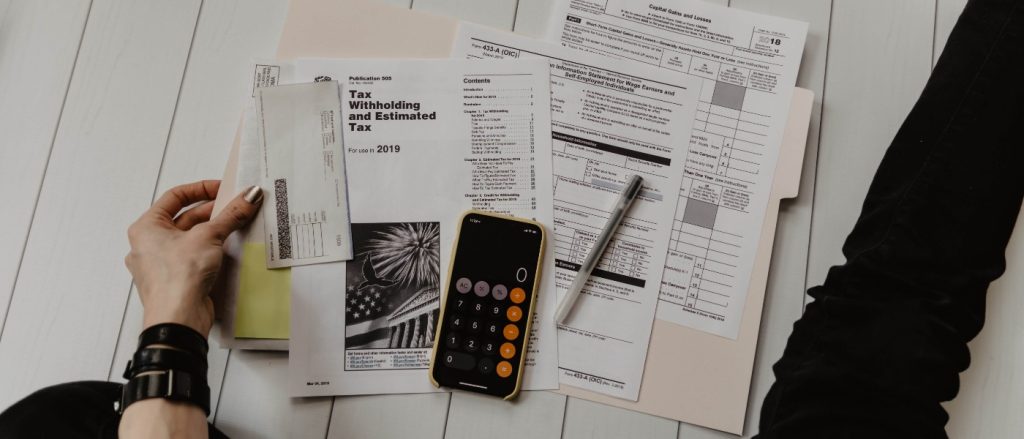The average income of British people has been slowly rising over the last 20 years. However, while the UK may be rising in the global ranks as one of the wealthiest countries in the world, it also ranks highly on a worldwide scale for having a significant wealth disparity among its citizens.
The wage gap between the UK’s richest and poorest populations is devastating. Upon further examination of income statistics by region, race, gender and age, there seem to be many people who don’t make enough income across the UK.
In this article, we’re going to talk about wealth distribution in the UK while looking at the regional, demographic, and global implications of the country’s wage gap.
Defining UK Income Statistics
(Editor’s Picks)
- The median annual household disposable income in the UK was £29,900 in 2020.
- In 2021, chief executives and senior management employees had the highest median full-time gross salary.
- Retired individuals in the UK earn an average of £304 per week.
- London has the highest GHDI per head in the UK.
- The top 10% of employees in London make £86,473 annually.
- In the UK, income inequality increased to 36.3% in 2020.
- In 2021, the gender pay gap in the UK was at 15.4%.
- The UK ranks eighth in income inequality among all OECD countries.
General Income Statistics in the UK
1. In 2020, the median annual income of a UK household was £29,900.
(ONS)
Over the last 10 years, median household income in the UK has grown by 7%.
Looking closer, we can see that the median income of the poorest fifth in the country dropped by a yearly average of 4.8% over the same period. On the other hand, the richest fifth experienced a steady yearly increase of 0.7% on average.
This data gives us a valuable insight into UK income distribution in 2020. Although median income in the country has been increasing at a steady rate, it wasn’t evenly distributed across class standings. The poor are still getting poorer, while the rich are getting richer.
2. Average household income in the UK has risen by 2.1% per year since 2013.
(ONS)
On the other hand, mean income has been increasing by a yearly average of 1.6% since 2013. This increase in mean income signifies that it is now at similar levels to those before the economic downturn in 2008. For median income, it went beyond pre-2008 levels by the end of the financial year 2015.
Lastly, the average household income in the UK in 2020 increased by 2.3% from 2019.
(The Equality Trust)
Since 1980, the income share of the population’s top 1% category has been consistently rising. 2015 was the year when it reached its peak, with income growth for the top 1% almost doubling that of Belgium (7%), Australia (9%), Norway (8%), and Sweden (8%).
4. As a result of the COVID-induced reforms, family income was reduced by only 13% after being unemployed.
(IFS)
The COVID-19 crisis has emphasised the importance of income protection. Statistics confirm that unemployment rose by 5.1% due to COVID-19.
Income protection statistics indicate that before the government introduced new income protection reforms to protect workers from job loss, family income was reduced by as much as 53% if a family member lost their job.
5. Chief executives and senior employees had the highest median full-time gross earnings in 2021.
(Statista)
Full-time employees in these professions make a median gross income of £1,664 per week. Sales and marketing directors come next, with a full-time gross salary of £1,442.4 per week. Looking at the gross national income statistics, the disparity between the highest and lowest-paying professions in the UK is pretty evident.
That said, the lowest-earning occupations are hairdressers and barbers, earning a median gross income of only £283 per week.
6. In 2020/21, the UK raised £196 billion in receipts from income tax.
(House of Commons Library)
Every year, the UK government raises over £820 billion in receipts. The three major contributors are value-added tax, National Insurance contributions, and income tax, statistics show. Combined, they account for over £460 billion in receipts.
7. The average weekly income for retired people in the UK is £304.
(Unbiased)
After subtracting taxes and housing costs, the yearly pension for Brits is about £15,080, putting 18% of pensioners below the poverty line.
The location has to be taken into consideration when talking about average retirement income statistics. For example, Londoners have a smaller average retirement income than those living in other regions. Government data shows that 67% of this income comes from private pensions.
8. From April 2021, the national minimum hourly wage for workers aged 23 and above is £8.91.
(Nidirect)
The minimum wage you can get in the UK mostly depends on your age. For people aged 23 and above, the national minimum wage amounts to £8.91 per hour starting April 2021. Additionally, those aged 21 and 22 earn £8.36, and those between 18 and 20 earn £6.56 per hour. Those under 18 years old earn £4.62, and apprentices earn £4.30 per hour. Lastly, in line with national income statistics, apprentices earn a minimum hourly wage of £4.30 — the lowest among the age groups.
Every April, the hourly rate increases and is set to increase to £9.50 this year for those aged 30 and above.
Disposable Income Statistics in the UK
9. Households in the UK population’s bottom 20% have a disposable income of £12,798.
(The Equality Trust)
The difference between the bottom 20% and the top 20% of households in the UK is more than apparent. For example, the top 20% of the population have a disposable income of £69,126, disposable income statistics show. By comparing original incomes (before taxes and benefits), the richest earn 12 times more than the poorest on an annual basis.
Despite the rise of the median income by 2.2% over the last five years, the poorest fifth experienced a decrease in their earnings by 1.6%, while the richest fifth experienced a 4.7% rise in average wages.
10. England accounted for 86.4% of the UK’s gross disposable household income in 2019.
(ONS)
The gross disposable household income in the United Kingdom reached £1,432 billion in 2019. While England accounted for almost 90% of the total gross household disposable income in the UK, statistics show that Northern Ireland contributed only 2.3% of the total.
11. With an average of £30,256, London has the highest gross disposable household income per head in the UK.
(ONS)
The International Territorial Levels classified the gross disposable household income in countries and regions in the UK. Unsurprisingly, London came out on top, with each person having an average of £30,256 to either save or spend.
On the other hand, the North East region had the lowest GDHI at £17,096.

London Income Statistics
12. By region, full-time employees in London have the highest median hourly wage in the UK.
(Statista)
In 2021, full-time jobs in London pay a median salary of £20.39 per hour. Next to London is South East region workers with a median hourly rate of £16.33.
On the contrary, workers in the East Midlands have the lowest median hourly wage, earning only £13.95 per hour.
13. The top 10% of earners in London make £86,473 per year.
(BBC)
The UK average household income varies by region, even for top earners. For example, if you belong to the top 10% of earners in London, you can earn over £85,000 annually. Comparatively, in Wales, salaries of the top 10% earners tend to be around £50,000 per year.
This stratification also holds true for other parts of the UK. For instance, in Scotland, the top 10% earn around £55,000, while in Northern Ireland, £50,000 will put you in the top percentile for earnings, national income trends show.
14. The median rent in London covers 47% of the median income.
(LSE London)
Needless to say, rent in London is far from affordable. However, things are better across England, where the median rent takes up only 27% of the gross median earnings.
15. Since 2002, average full-time earnings in London have increased by just 1.5%.
(BBC)
When compared to the 5.6% increase across the UK since 2002, the wage gap among Londoners and the rest of the country is evident and alarming. The average income in London shows slower growth in wages over the last two decades but, on average, provides larger salaries than other parts of the UK.
Notably, Scotland has reported the highest income growth, between 8% and 12%, depending on the region.
16. In London, the bottom half of the net income distribution comprises 23.1% of the city’s total net income.
(Trust for London)
The income distribution in London shows significant inequality. For example, the top 10% of households earn around 33.4% of the city’s net income, while the bottom 10% earn only 1.8%.
UK income distribution data further shows that the top 10% of households had twice as much income as that of the second-highest 10%. When comparing gross income, the income share for the top 10% is even higher, comprising 38.2% of the total gross income of Londoners.
17. For the rest of England, the top 10% of earners account for 26.6% of the total net income.
(Trust for London)
Londoners represent the extremes of the trends in the distribution of household income in the UK, and the rest of England doesn’t fare much better. The top 10% of households still hold more than a quarter of the total net income. When it comes to gross income, they take 30.2% of England’s total.
Congruently, the bottom 10% of earners in England have larger gross (2.5%) and net (2.6%) incomes compared to London. Poor Londoners are, indeed, quite poor, with a gross income share of 1.6% and a net income share of 1.8%.
Income Inequality Statistics
18. In 2020, income inequality in the UK rose to 36.3%.
(ONS)
In spite of the steady increase in wages in the UK, income inequality has continually increased. However, although income inequality data shows that income disparities recorded in the country reached an all-time high since the beginning of the decade, it is still lower than the disparity recorded during the 2008 economic downturn (38.6%).
19. On average, white ethnic groups have 65% more household income compared to Black ethnic groups.
(ONS)
Despite the decrease in income disparity among the general population, racial income disparity remains an issue.
In 2019, household income statistics in the UK indicate that the average household income among White ethnic groups was £42,400. On the other hand, Black ethnic groups were earning just £26,000. This was the yearly wage before tax and benefits.
Taxation tiers provide some relief to this wage discrepancy. However, Black households, on average, still make 18% less than their White counterparts.
20. In 2019, the pay gap between ethnic minorities and white employees was 2.3%.
(Statista)
Speaking of distribution of income, statistics reveal that the wage gap between ethnic minorities and their white equivalents is shrinking in the UK. It dropped from 8.4% in 2014 to 2.3% in 2019.
Perhaps, this doesn’t quite represent the staggering pay discrepancy that many ethnic groups face in the workplace. For example, white Irish workers earn almost £7 more per hour than regional Pakistani workers.
21. In 2021, the gender pay gap in the UK was at 15.4%.
(Statista)
While the gender pay gap in the UK is much lower than it was years ago, it still remains a pertinent issue. In the UK, income inequality statistics show that the gap has decreased significantly from 27.5% in 1997 to what it is now.
Much work still has to be done to address this particular aspect of gender inequality. In particular, minimising the gender pay gap among older workers, where it is more apparent, would be a leap in the right direction.
Global Income Statistics
22. In 2020, the UK had the highest average annual salary among the largest economies in Europe.
(Statista)
While it hasn’t always been so, the UK is one of the leaders among European countries regarding annual earnings. Among the five strongest economies in Europe (Germany, France, Spain, Italy, and the UK), the UK only comes second to Germany.
Additional income statistics reveal that the average yearly salary in the UK began to rise in the year 2000 when it surpassed Spain, Italy, and France for the first time. Before that, the UK had the lowest ranking among these top counties.
(Eurostat)
World disposable income statistics show that the adjusted disposable income in Europe reached over €10 billion during that year, which was equivalent to 72.7% of the value of GDP. Of this, Germany contributed 25.7%. Next to Germany, France came second with a contribution of 18.6%, and Italy came third, contributing 13.6% of the total gross household adjusted disposable income.
The most significant drop in the average disposable income in Europe was during the global economic crisis. This devastating event impacted income figures from 2010 to 2013. For reference, in the UK, personal income statistics show that, after adjusting for inflation, adults earned around £1,000 more in 2019 than in 2000.
24. Among OECD countries, the UK ranks eighth in income inequality.
(OECD)
The Gini coefficient is used to measure the distribution of income across a population, with 0 indicating perfect equality and 1 indicating perfect inequality. Among OECD countries, the UK has a score of 0.37, putting the country in eighth place in countries with the highest income inequality.
Additional world income inequality statistics show that South Africa ranks first, with a Gini coefficient of 0.62. Other countries ranking higher than the UK include Costa Rica, Chile, Mexico, Bulgaria, Turkey, and the United States.

Final Words on UK Income Statistics
While the income disparity in the UK slowly closes, there is still a lot to work on. The average income between the richest and the poorest in society is unevenly distributed, with the top 10% holding the majority of wealth in the country.
Further examination of racial and ethnic distributions, geographic region, and gender also show inequality. In particular, the average household income in London is higher than in the rest of the country. London has higher average wages than the rest of the country. In general, median incomes in England far surpass those in other countries of the UK, such as Scotland, Northern Ireland, and Wales.
The UK is one of the wealthiest countries globally, but it still has a long way to go when it comes to income distribution.
Frequently Asked Questions
According to the latest data released by the Office for National Statistics in April 2021, the average income in the UK is £31,772 per year. When broken down to a weekly rate, that’s £611 on average.
This marks the highest wage growth since 2008. However, after adjusting for inflation, the increase is only about 2.3% higher since 2008. The increase in income has been showing a rising trend since 2013, on average 2.1% per year. During 2020, real earnings experienced a growth of 1.5%.
Income inequality in the UK ranks eighth among OECD countries. Some of the principal reasons behind this are:
● There is an increase in part-time work, which has low pay and doesn’t come with union protection;
● The minimum wage can’t help reduce inequalities since most people on a minimum wage are students, and many of them are not poor;
● Rising property prices impact young people a lot as larger rental rates are compensating for wage growth;
● A lot of people are on unemployment benefits;
● Taxes are increasing at a faster rate than inflation.
The average household earnings in London vary depending on which borough you work in. Looking at London as a whole, however, there are differences between greater, outer, and inner London.
The median household income in London is £30,700, while the mean household income is £36,501. About 48% of households in London have earnings under £30,000, while 87% earn less than £60,000.
ONS data released in 2020 show that full-time workers in the UK had an average yearly salary of £38,600. On the other hand, part-time workers earned an average of £13,803 per year.
Further data demonstrates a year-on-year increase from 2019 figures — £36,611 for full-time and £12,495 for part-time workers. This indicates a positive trend toward income equality.
In the UK, there are approximately 310,000 people belonging to the top 1% of earners.
To belong to this group, you need to have a yearly taxable income of £160,000 or more. Additionally, to be part of the top 0.5% of earners, you need to earn £234,000 per year, and for the top 0.1% of earners, a yearly taxable income of £650,000 is required.
In the UK, wealth is unevenly distributed. That’s why the UK is one of the OECD countries with the highest Gini coefficient (eighth place at 0.37).
This is proved by the latest income statistics, wherein the top 10% of households hold the majority of the wealth in the UK. The top three deciles own 76% of the wealth in the UK. On the other hand, the bottom three deciles hold only 2%.
Sources:

